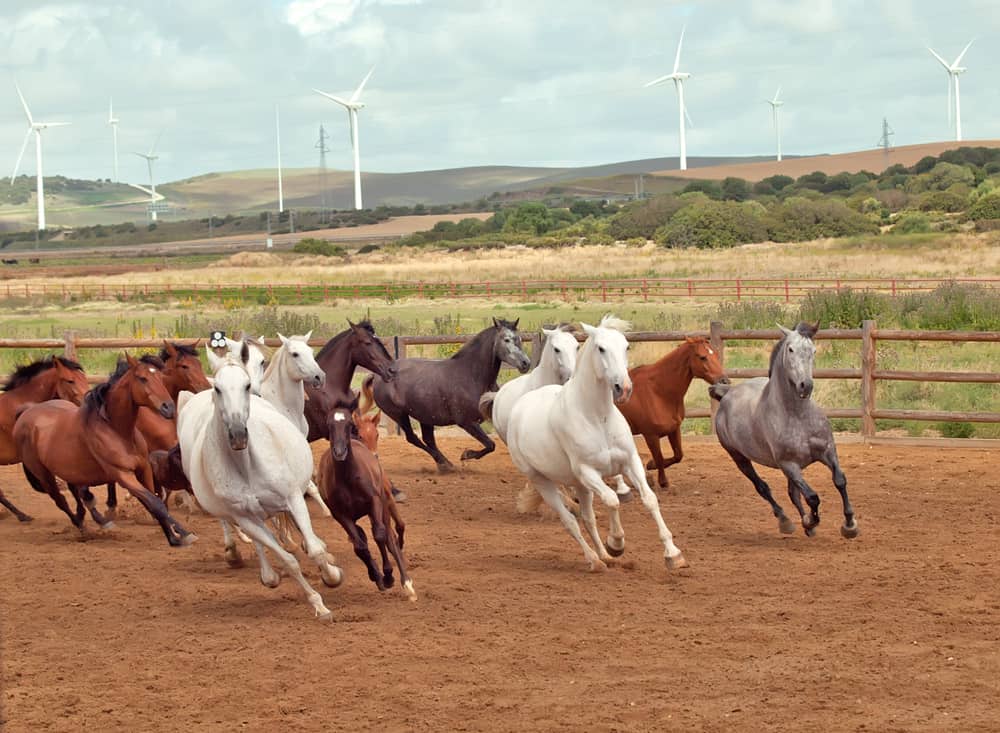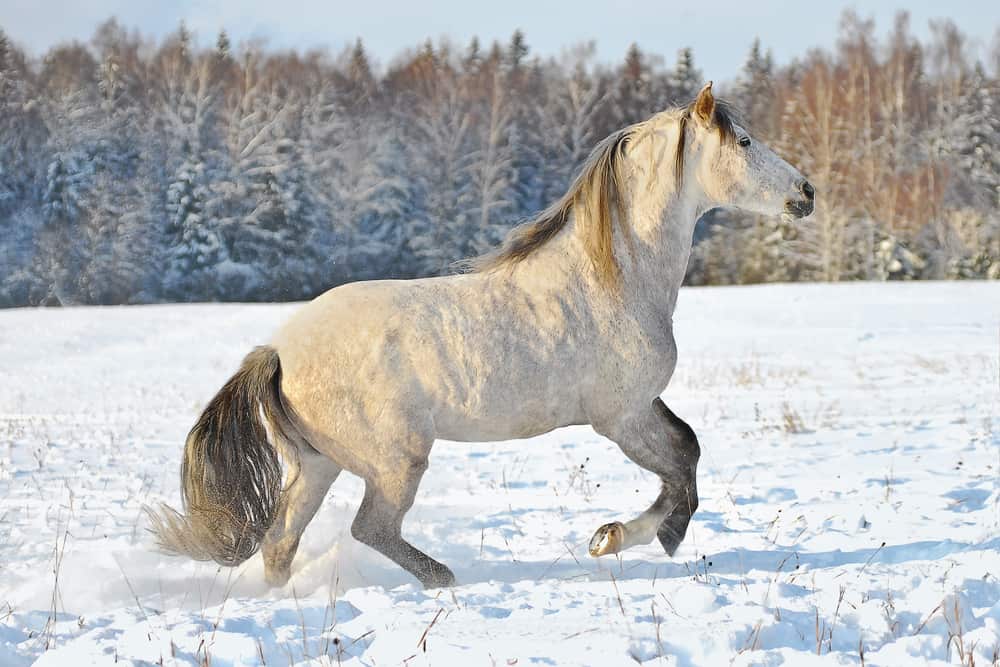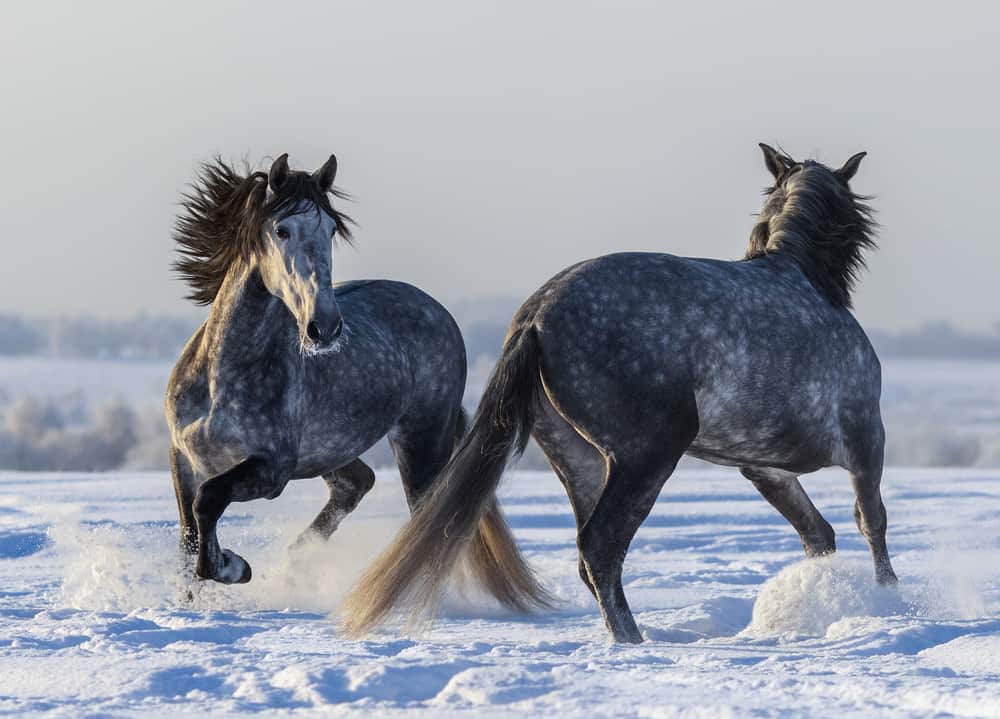The Location of Andalusian Horses is a topic that will pique the interest of equestrians, horse enthusiasts, and animal lovers alike. Originating from the Iberian Peninsula in Spain, Andalusian horses have been prized for their beauty and athleticism for centuries. These extraordinary animals are some of the most sought-after.
Andalusian horses are a breed of horse most commonly found in the Iberian Peninsula of southern Spain. They are known for their beauty and athleticism and have been prized by equestrians and horse enthusiasts for centuries. Andalusians can be seen throughout Europe and North America but are considered their native home in Spain.

In Spain, several significant locations are renowned for producing Andalusians. The “Golden Triangle” is the most famous area between Seville, Cordoba, and Cadiz. This region is known for its beautiful rolling hills and lush green pastures, providing an ideal environment for Andalusian horses.
In addition to the “Golden Triangle,” Andalusians are also found in other parts of Spain, such as Extremadura and Castilla y Leon. The area is also known for its growing equestrian industry, with breeders producing some of the best Andalusians in the world.
Table of Contents
Are Andalusian Horses at Risk of Extinction?
The Andalusian horse is a powerful, beautiful, and noble breed that has been around for centuries. Unfortunately, it is now facing extinction due to several factors.

The leading cause of this decline is the need for more demand for purebred Andalusians. As other breeds have become more popular, fewer breeders have been willing to invest in the breed, leading to a decrease in quality and numbers. Additionally, the cost of breeding and caring for an Andalusian is relatively high, which has added to the decline.
In some areas, uncontrolled crossbreeding with other horse breeds has also decreased purebred Andalusians. This dilutes the gene pool and reduces the breed’s unique characteristics. Over time, the species could be lost if nothing is done to stop it.
Fortunately, measures are being taken to protect Andalusian horses. Organizations like the Purebred Spanish Horse Association work hard to promote and preserve this magnificent breed.
They are researching ways to improve the quality of Andalusian horses and encouraging responsible breeding practices. Additionally, they are educating people about the breed so that more individuals will be interested in owning an Andalusian horse.
With continued attention and care, it is possible to save the Andalusian horse from extinction. By supporting organizations like the Purebred Spanish Horse Association, we can help ensure this beautiful breed will continue to thrive.
What is unique about Andalusian horses?
The Andalusian horse is renowned for its beauty, strength, and agility, making it an ideal choice for various equestrian disciplines and activities. This ancient breed has been used in many different ways, from bullfighting to dressage.

The Andalusian horse is also one of the oldest breeds in the world, having been around for over 500 years. It originated in Spain and was once a favorite of Spanish royalty, including King Philip II. The breed has roots in the ancient Iberian horse and is considered one of the purest breeds today.
The Andalusian horse is known for its noble character, good-natured nature, and beautiful appearance. This is a large, thick-boned horse with an arched neck and strong hindquarters. It has long legs, a straight back, and a broad chest. The breed usually stands 15 to 17 hands high and comes in various colors, including bay, black, grey, and dun.
Is the Andalusian horse rare?
The Andalusian horse is an iconic breed known for its elegance and grace. These beautiful animals have a long history, with some lineage dating back to the 1700s and earlier. They were popular among Spanish royalty and nobility, and their influence on horse breeding cannot be understated.

Regarding rarity, the Andalusian horse is classified as an endangered breed. There currently need to be more than 10,000 breeding stocks in existence worldwide. Nevertheless, their popularity among horse lovers means they are still widely sought after and cherished.
Famous examples of Andalusians include the legendary stallion Caballero III, who was used to create the Spanish Riding School’s Lippizaner breed. Other notable Andalusians include Emperor, the mascot of the 1984 Summer Olympics, and Ucello Della Loggia, who won several medals in dressage competitions.
The Andalusian horse is a captivating breed with an illustrious history. They are beloved by equestrians for their athleticism and grace, and their endangered status has only added to their allure. With proper care and stewardship, this magnificent breed will remain a part of the equestrian world for many years.
What is the lifespan of an Andalusian horse?
The Andalusian horse is one of the oldest equine breeds in the world, with records indicating that these majestic creatures have been around since at least the 16th century. These animals often referred to as “The Horse of Kings,” are renowned for their beauty and exceptional longevity.

The average lifespan of an Andalusian horse is between 25-30 years when kept in optimal health and housed with proper care. This longevity is due to the breed’s robust immune system, disease resistance, and low susceptibility to injury or illness. Additionally, their well-developed musculature makes them complex creatures that can endure long work hours without tiring.
The Andalusian horse is famous for show and carriage purposes due to their natural grace and elegance. This breed is often used in dressage, showing, or Western pleasure events. They are also renowned for their fluid gaits, making them an excellent choice for driving or trail riding.
An Andalusian horse can live a long and healthy life with proper care and nutrition. If you are considering owning one of these majestic creatures, research their care requirements and find the right home for them. Doing so will ensure your four-legged friend is happy and healthy for many years.


